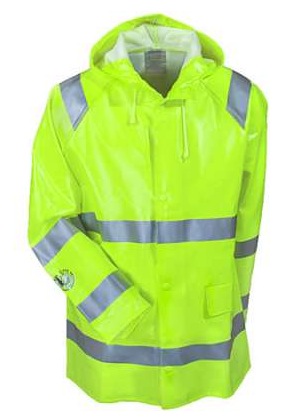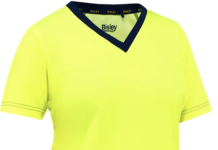Being compliant with ANSI/ISEA 107 regulations for high-visibility apparel has never been more important. Here are four tips to make sure your high-visibility apparel is compliant with ANSI/ISEA 107 standards. In the need for new high-visibility products? Check out Ergodyne and OccuNomix for exceptional hi-vis products.
The first step (and easiest, if you ask us) is to purchase a high-visibility product that is ANSI 107 compliant. You’ll know if it is compliant by its tag. The high-visibility garment must have a label that has a pictogram of a vest or a drawing that depicts the actual garment itself. There also must be two numbers next to that drawing. In order to be ANSI 107 compliant, the top number must be either 2 or 3. This means the high-visibility garment is either class 2 or class 3. If it has a number 1, that means it is a Class 1 garment and it is not meet the new MUTCG or FHWA requirements. The bottom number will say 1 or 2. This is less important, because either one is acceptable. Since you’re dying to know, we’ll tell you that the 1 or 2 stands for the performance level of the reflective tape. Finally, the label must also actually say that the high-visibility garment conforms to ANSI/ISEA 107, and if it does, it will also say which version it is compliant with, and this is shown by the year. For example — “Meets ANSI/ISEA 107-2010.”
The second step in making sure your high-visibility apparel is compliant with ANSI/ISEA 107 standards is to check if the design of the product meets your needs. High-visibility garments that are compliant with ANSI standards are limited to only three colors: Fluorescent Orange-Red, Fluorescent Yellow-Green, and Fluorescent Red. It does matter which color you pick, because you ought to pick a color that differentiates you from your surroundings. For example, if you’re surrounded by orange construction barrels, you might want to choose the Yellow-Green or Red varieties instead of Orange-Red. Other than that consideration you have many options. There is a wide array of styles that meet ANSI 107 compliance, so you ought to select high-visibility garments that meet your needs year-round and in all types of weather conditions.
The third step in making sure your high-visibility apparel is compliant with ANSI/ISEA 107 standards is that you wear the product properly. (Seems obvious, doesn’t it?) It’s pretty simple: You must wear your high-visibility clothing on the outermost layer of your clothing. In other words, it’s not going to do its job if you put a jacket or something over it and no one can see it. The other important thing about wearing it properly is that if it has a front closure, like a zipper for example, it must be worn closed (zipped up.)
Finally, the fourth step in making sure your high-visibility apparel is compliant with ANSI/ISEA 107 standards is that you must maintain care of the garment and replace it when it is no longer usable. Over time, clothes fade and get dirty. This goes for high-visibility clothes too. Most high-vis clothes can be washed in the laundry and there ought to be directions that tell you how to care for them, including the maximum number of launderings, all listed on the label. But the “number of launderings” guideline is not a clear-cut guide for knowing when to replace your high-visibility garment. It might not last that long. If your garment looks dirty or faded and washing doesn’t help, it’s time to replace it. Better to spend the money than to risk an accident. Get all your favorite high-visibility jackets, sweatshirts, shirts, vests, bibs, pants, gloves and accessories from WorkingPerson.com today.




